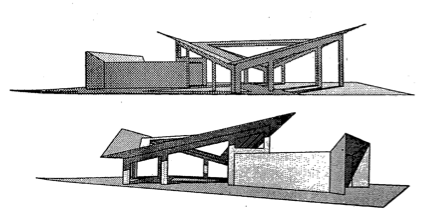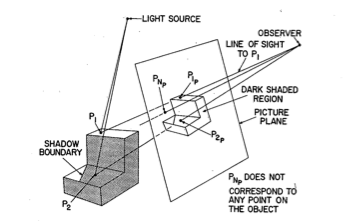Chapter 4: Basic and applied research moves the industry
4.7 Other research efforts

Of course, the discussions in the previous sections are not by any stretch of the imagination reflective of all of the research activities taking place in the U.S. or abroad during this early period. For example:
- Work in geometric modeling was being conducted at the Cambridge University CAD lab, with A. Robin Forrest and others. Forrest spent time at Harvard with Steven Coons, and developed a more stable approach to the representation of free-form curves and surfaces, that contributed significantly to CAGD development efforts;
- Arthur Appel and his team of researchers at IBM were developing software and hardware that would not only influence the future CAD industry, but that would affect the CG discipline at large. For example, he contributed to the rendering literature with his research into hidden line solutions; he provided what some claim to be the world’s first exposure to ray tracing, with his process of determining whether a point was in shadow Images at right); and he introduced the concept of quantitative invisibility as an approach to visible surface determination;


- Automotive and aerospace companies, such as GM, Ford, Renault in France (Pierre Bézier), Boeing (Ferguson), McDonnell Douglas, and Lockheed Georgia (Chasen) were investigating software solutions for corralling the power of the digital computer for design activities. Chasen was a vocal proponent of the need for graphics hardware companies to develop better technology, and to leave the development of software components to the software industry groups that were much closer to the needs of the users;
Early computer graphics developments in Germany were initiated in Berlin by Wolfgang Giloi when he started there in 1965 in computer graphics GUIs, hardware and software R&D.Two of his former PhD students, Jose Encarnação and Wolfgang Straßer, made substantial contributions to key developments in computer graphics, like Z- buffer and raster technology, device-independent graphics and graphics standards.(See an accounting of this activity in an article on the Giloi school.)
Forrest, Archibald Robin.Curves and surfaces for computer-aided design. PhD dissertation, Published 1968 by University of Cambridge
Forrest, Robin. The Emergence of NURBS, IEEE Annals of the History of Computing, V20 #2, 1998.
Appel, Arthur. Some techniques for shading machine renderings of solids, Spring Joint Computer Conference, 1968 pp 37-45.
Appel, Arthur. The notion of quantitative invisibility and the machine tendering of solids, Proc. A.C.M. National Meeting, 1967 pp 387-393.
Appel, Arthur, F. James Rohlf and Arthur Stein. The haloed line effect for hidden line elimination, Proc. SIGGRAPH 79, pp151-157.
Giloi, Encarnacao and Strasser. The “Giloi’s School” of Computer Graphics.
